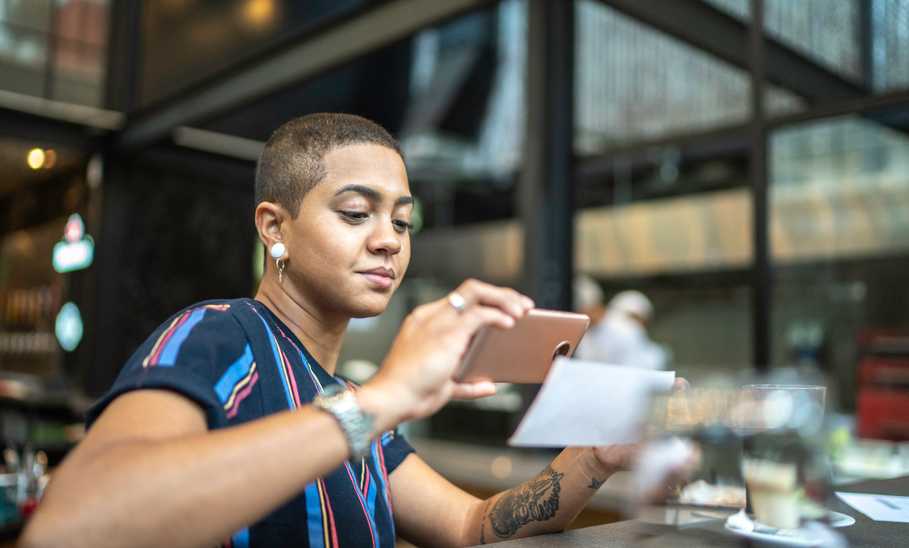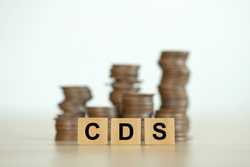Money Order: What Is It, How Does It Work, How to Get One

Our evaluations and opinions are not influenced by our advertising relationships, but we may earn a commission from our partners’ links. This content is created by TIME Stamped, under TIME’s direction and produced in accordance with TIME’s editorial guidelines and overseen by TIME’s editorial staff. Learn more about it.
A money order is a financial instrument that allows you to pay bills or reimburse friends and family without having to write a check or use cash. You can get one from a bank, but you don't need a bank account to use it. Many people use money orders as an alternative to cash or checks as a safe, secure way to make payments. If you need to purchase a money order or someone has given you one as payment, it helps to know a little about how they work.
Money orders allow you to exchange cash or funds in your bank account for a paper document that has monetary value. The person buying the money order decides how much value it should have, though the issuer may cap the maximum amount. For example, the U.S. Post Office limits a money order to $1,000.
When you purchase a money order, you pay the face value amount using cash or a debit card. You may also pay a small fee to buy the money order. Once the person or business to which you're giving the money order receives it, they can take it to their bank to cash or deposit it.
A money order isn't a check, as it's not tied to a bank account. You can buy money orders through your bank or credit union, but the following types of businesses also sell them:
A money order has its pros and cons. Weighing both can help you decide if it makes sense for you to use one.
Here are some of the main benefits of a money order:
Here are some of the drawbacks of using a money order:
Note that if you plan to take a cash advance from a credit card to purchase a money order, it can trigger a cash advance fee and a higher annual percentage rate (APR) than for regular purchases on the card.
If you need to pay a business or person using a money order, the first step is finding a seller. You might start with your current bank or credit union. If you don't have one, you could try an online search for “money order near me” to get local results for retailers that sell them. If all else fails, you could always visit your local post office to purchase one.
Once you've decided where to buy the money order, go there with your funds in hand. Again, you should be able to use cash or a debit card to make the purchase.
Here are the general instructions for filling out a money order:
You should be given a receipt when you purchase a money order; if you aren’t, ask for one. This way you have documentation of the purchase in case the money order is lost or stolen and must be refunded or replaced.
Once you have filled out the money order, you can deliver it to the recipient. You might hand it off in person or mail it. In the latter case, it’s a good idea to request signature confirmation to ensure it's delivered to the right person or business.
As mentioned, you'll typically pay a fee to purchase a money order, usually around $5 or less. You may want to check the fees at different sellers to see how they compare.
Generally, you can cash a money order where you purchase it. This includes the post office, convenience stores, banks, Western Union locations, and Walmart. Note that Walmart only cashes money orders from Western Union and MoneyGram.
The process for cashing a money order can depend on where you're doing it. In most cases you'll need to:
If you'd like to deposit a money order into a bank account, take it to your bank, fill out a deposit slip, present your ID to a teller, sign the money order in front of them, and hand it over to be added to your account.
A cashier's check is another way to make payments without writing a check from your bank account or paying cash. When you want a cashier's check, you give the bank the appropriate amount of funds, along with any fee that's required. It then issues a check for the amount you specify against its own funds instead of yours.
You can use a cashier's check to pay bills or make guaranteed payments to someone. For example, if you're buying a car from your cousin, you might give them a $10,000 cashier's check to cover the amount. They could then take that check to their bank and cash or deposit it.
Let’s look at how cashier’s checks and money orders compare with each other.
| Money order | Cashier's check |
|---|---|
Can be purchased at banks and some other locations Guaranteed by the funds you use to purchase it May be limited to $1,000 Fees may range from under $1 to $5 Secure alternative to cash or personal checks | Issued by and purchased at banks Guaranteed by the bank's funds Banks and credit unions may set higher maximum limits than for a money order Fees may range from $5 to $15, depending on the bank Considered to be more secure than a money order |
A money order can help you send funds when you don't have a bank account or want an alternative payment option. It may be best used when sending payments to businesses or people you know. Likewise, you may want to use caution when accepting a money order from a stranger; make sure the payment is legitimate first.
No. It's possible to cash a money order wherever it was issued. Keep in mind that anytime you're cashing one, there may be a fee to do so.
Money orders are often viewed as being the same as cash because they have an exact face value. However, you couldn't use a money order in a store as payment. You'd first need to cash it in order to access the funds.
Anyone can cash a money order that's made out to them if they have the appropriate form of government-issued identification. If a minor child receives a money order, they'll need a parent's help to cash it.
If you don't have an acceptable form of ID, you may need to sign the money order over to someone else who does. They can then cash it and give the money to you.
Yes, you can, through the serial number that's attached to it, which should be printed on the receipt that you were given upon purchase. If you don't have the number, you won't be able to tell if or when it was cashed.
If a money order isn't cashed, the face value amount remains on it, as money orders don't have an expiration date. If you send a money order to someone and they don't cash it, you can ask the issuer to cancel it and return the funds to you.
The information presented here is created by TIME Stamped and overseen by TIME editorial staff. To learn more, see our About Us page.



